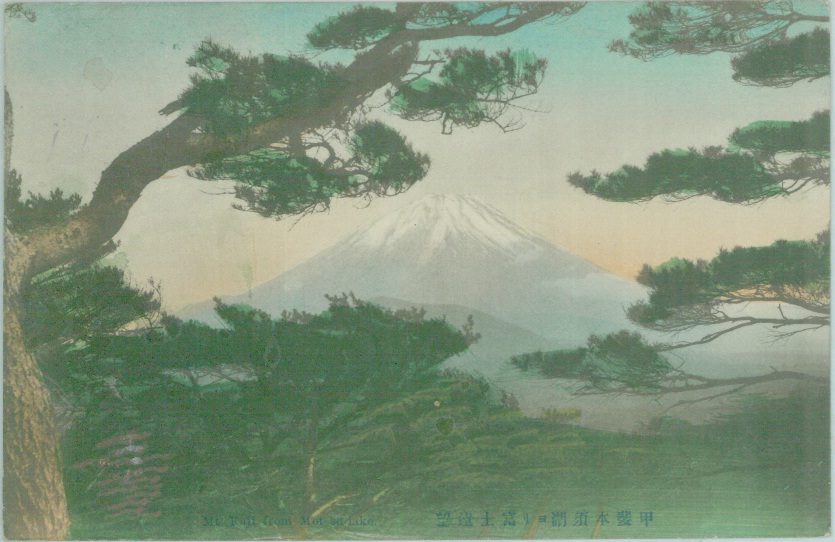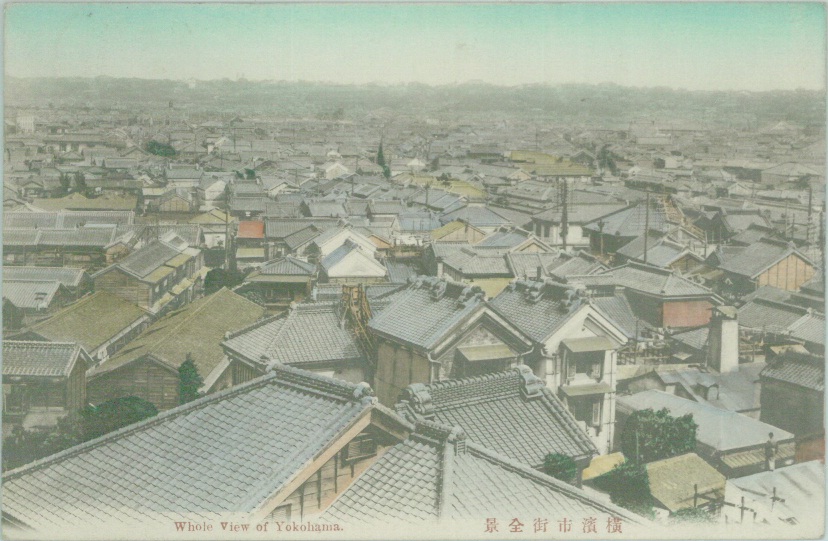By Andrea Cronin
During a peace mission in Japan in 1916, American physician Morton Prince sent many postcards to his wife who remained at their home on Beacon Street in Boston. While exploring the cities of Yokohama and Tokyo, the doctor wrote short explanatory notes about the scenes on the postcards. Here are two of the many cards in the Morton Prince papers which illustrate the natural beauty of Japan’s landscape in stark contrast to the urban development of the Kanto metropolitan area in the early 20th century.
On 21 May 1916, an unidentified member of the peace mission entourage wrote to Mrs. Morton Prince with an update about her husband.
All goes
well. The
Dr. is very
well indeed.
The front image is a beautiful view of Mount Fuji, or as the Japanese call the mountain, Fuji-san, 富士山. Mount Fuji is located approximately 60 miles south-west of Tokyo and 75 miles west of Yokohama. Interestingly, this postcard bears the postal stamp of Yokohama rather than any of the surrounding towns near Mount Fuji.

The delegation continued north-east toward Tokyo. This postcard bears the postal stamp of “Tokio” despite the scenery of Yokohama on the front. Recognized as Tokyo today, “Tokio” was the romanization of the Japanese city at the time.

On 24 May 1916, Morton Prince wrote to his wife about the view of Yokohama, 横浜市:
This is the way
the homes are
crowded in.
The outside of the
natives’ homes are
rather squalid or
down at the heel
but inside clean
& neat
MP.
The peace mission was successful in engendering diplomacy and friendship. In 1918, Dr. Morton Prince received the Order of the Rising Sun medal for his efforts in Japanese-United States relations. The Order of the Rising Sun was a Japanese Imperial decoration bestowed upon individuals who had rendered distinguished service to the nation and people of Japan. While the MHS does not have Morton Prince’s medal in its collections, it does have the medal awarded to William Sturgis Bigelow in 1928.

